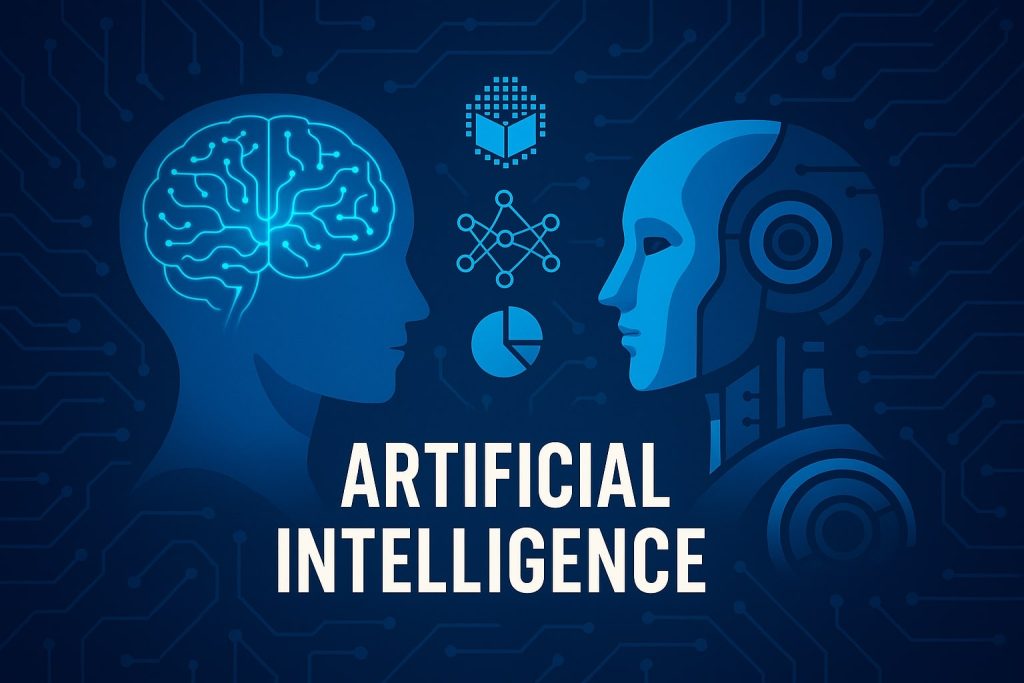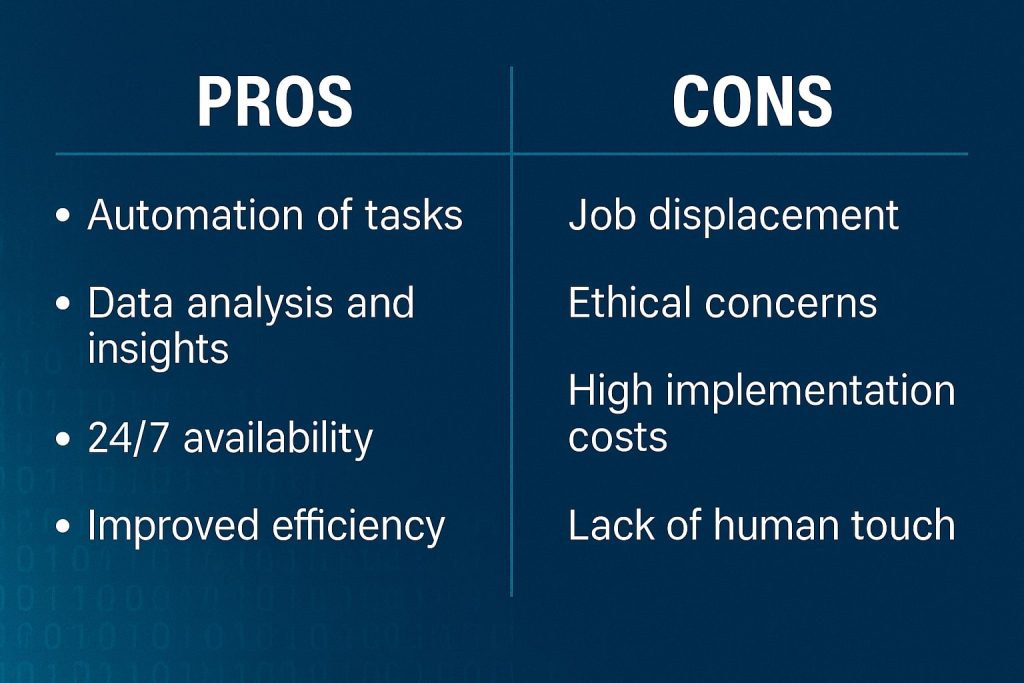In the digital age, one term dominates innovation conversations across industries—artificial intelligence. From powering search engines to enabling self-driving cars, AI has become one of the most transformative technologies of the 21st century

What is Artificial Intelligence?
Artificial intelligence, or AI, is the ability of a computer or machine to mimic the capabilities of the human mind. These capabilities include learning from examples and experience, recognizing objects, understanding and responding to language, making decisions, and solving problems. AI systems are powered by algorithms, using techniques such as machine learning and deep learning to demonstrate behaviors associated with human intelligence
Artificial Intelligence Defined
AI can be defined as the development of computer systems that are capable of performing tasks that normally require human intelligence. These tasks include reasoning, learning, problem-solving, perception, and language understanding. The primary goal of AI is to create intelligent agents—systems that perceive their environment and take actions that maximize their chances of achieving specific goals.
Who is the Father of AI?
John McCarthy, an American computer scientist and cognitive scientist, is widely regarded as the father of artificial intelligence. In 1956, he organized the famous Dartmouth Conference where the term artificial intelligence was first formally used. His work laid the foundation for modern AI and led to the creation of the LISP programming language, which became the standard tool for AI research for many years
What Are the 4 Types of AI?
Reactive Machines – These AI systems are purely reactive and do not store memories or use past experiences to inform current decisions. Example: IBM’s Deep Blue chess-playing computer.
Limited Memory – This type of AI can look into the past. Autonomous vehicles, for instance, can observe other cars’ speed and direction and make decisions accordingly.
Theory of Mind – This category, still theoretical, refers to AI’s ability to understand human emotions, beliefs, intentions, and interact socially.
Self-Aware AI – This is the most advanced form of AI, which currently exists only in theory. Such systems would have self-awareness, consciousness, and understanding of their own state.
Explore the Future with Artificial Intelligence
Artificial Intelligence (AI) is no longer just a futuristic concept—it’s transforming the way we live, work, and interact every day. From voice assistants in our phones to recommendation engines on e-commerce platforms, AI is now deeply embedded in our daily routines. It empowers businesses to make smarter decisions, improves customer experiences, and enables automation at an unprecedented scale.
AI uses advanced algorithms and machine learning to analyze massive amounts of data, recognize patterns, and solve complex problems faster than ever before. In industries like healthcare, AI helps with early diagnosis and treatment planning. In agriculture, it boosts productivity through smart crop monitoring and predictive analytics. From banking to education, its applications are limitless.We bring you curated, easy-to-understand insights into how AI is changing industries, everyday life, and the wellness space. Our goal? To empower you with knowledge that inspires smarter living.In today’s fast-evolving world, Artificial Intelligence (AI) is more than just a buzzword—it’s a revolutionary force reshaping how we live, work, and care for our health.
Can AI Replace Human Intelligence?
AI is often compared to human intelligence, but the two are fundamentally different. AI excels at processing large amounts of data quickly, identifying patterns, and executing tasks with precision. However, it lacks the emotional understanding, moral reasoning, and common sense that humans possess. Rather than replacing human intelligence, AI should be viewed as a tool that augments human capabilities, enhancing productivity and enabling us to focus on more creative and strategic tasks.
How Does AI Work?
AI works through a combination of data, algorithms, and computing power. The process starts with collecting large volumes of data. This data is then processed and analyzed using machine learning algorithms, which identify patterns and relationships. These insights are used to make predictions, recommendations, or decisions. AI systems continuously learn and improve from new data, enhancing their performance over time.
Types of Artificial Intelligence
Narrow AI – Also known as Weak AI, it is designed to perform a narrow task (e.g., facial recognition, voice assistants). Most of the AI applications we see today fall into this category.
General AI – Also known as Strong AI, it can perform any intellectual task that a human can. This type of AI is still in the research and development phase.
Super AI – This is a hypothetical AI that surpasses human intelligence across all fields. It would have the ability to reason, solve problems, and even possess consciousness.
Artificial Intelligence Training Models
Supervised Learning – The model is trained on a labeled dataset, which means the algorithm is given both the input and the desired output.
Unsupervised Learning – The model is given data without explicit instructions on what to do with it. It must find patterns and relationships on its own.
Reinforcement Learning – The model learns by trial and error, receiving rewards or penalties based on its actions.
Deep Learning – A subset of machine learning that uses neural networks with many layers. It is especially powerful in processing images, speech, and complex data.
Benefits of AI
Automation – AI can automate repetitive and time-consuming tasks, leading to increased efficiency.
Data Analysis – AI can process and analyze large datasets much faster than humans.
Accuracy – AI systems can reduce errors and deliver consistent results.
Personalization – AI can tailor services and content to individual users.
Availability – AI systems can operate 24/7 without fatigue.

Pros of Artificial Intelligence
1. Accelerated Innovation Across Industries
Artificial intelligence accelerates innovation in sectors like healthcare, agriculture, education, and transportation. For example, AI is being used to develop new drugs faster by simulating molecular interactions in the lab, reducing what once took years to just months. In agriculture, AI-powered drones and sensors help farmers monitor soil health and crop growth, improving yields sustainably.
2. Enhanced Personalization and User Experience
One of the most user-visible applications of AI is personalization. From Netflix recommendations to Spotify playlists and tailored shopping experiences on Amazon, AI algorithms analyze your behavior to suggest relevant content or products. This not only enhances user satisfaction but also improves customer retention for businesses.
3. Strengthening Cybersecurity and Risk Management
AI plays a vital role in detecting cyber threats and preventing fraud. Machine learning models can recognize abnormal user behavior or unauthorized access in real time, helping organizations secure sensitive data. Banks use AI for fraud detection by flagging suspicious transactions instantly
Cons of Artificial Intelligence
1. Deepening Economic Inequality
While AI is driving profits and productivity in large enterprises, it often leaves small businesses and low-income workers behind. Companies with the resources to implement AI gain a competitive edge, while those without access to such technologies risk becoming obsolete. This creates a digital divide, worsening inequality across economies.
2. Over-Reliance on AI and De-skilling
As AI systems become more prevalent, humans are becoming increasingly reliant on machines, potentially leading to skill degradation. For example, in navigation, GPS has largely replaced map reading. In the long term, such dependence may reduce problem-solving and decision-making abilities among professionals.
3. Bias and Discrimination in AI Algorithms
AI models are only as unbiased as the data they’re trained on. If that data contains racial, gender, or social biases, the AI will replicate and even amplify those biases. For example, AI-driven recruitment tools have been criticized for unfairly filtering out candidates based on biased historical data.
